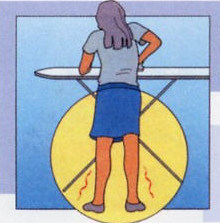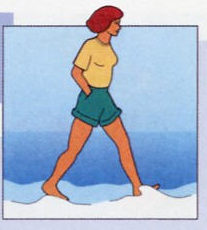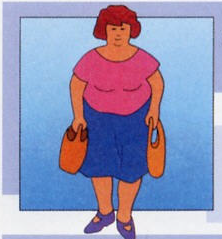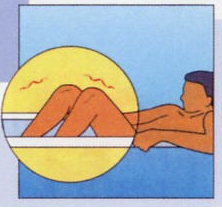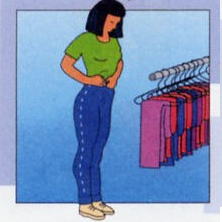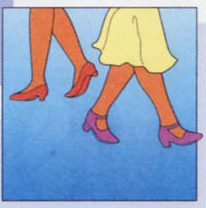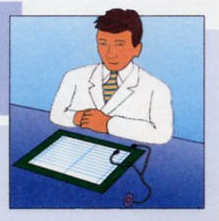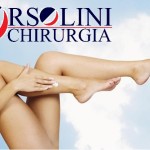
THE varicose veins : NOTIONS SYNTHETIC FOR PATIENTS
TABLE OF CONTENTS:
WHAT ARE
- History
- Definition
- Notes anatomical / physiological
- Risk Factors
HOW TO DIAGNOSE
- When making a visit
- Laboratory Tests
WHEN AND WHY 'ACTION
- The complications of the disease
TREATMENTS
- Traditional and modern
- Natural therapy and homeopathic
- Drug Therapy
- Treatment by physical means
- Sclerotherapy
- Surgical therapy
TIPS
CONCLUSIONS
WHAT ARE
HISTORY
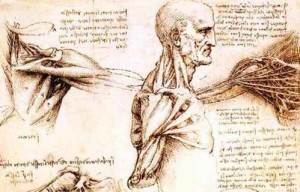
Anatomical drawings of Leonardo Da Vinci
Right from 'antiquity venous diseases have aroused a lot of interest both for the wide distribution and for the pain he procured. Already 'in the Holy Bible, the prophet Isaiah to King Hezekiah was healed ulcer of the lower limbs by a pack fichi.Altro key character was Hippocrates who through his technique of multiple stings of varicose veins caused a then-obscure phenomenon , known to us today as endoflebite giving way to the practice of sclerotherapy. Continuing followed one another over the years people like Celso , Galen and Pliny the Elder, who introduced the binding and subsequent cauterization of varicose veins, and proposed the leaf mandrake therapy as "medical." During the Renaissance, the leading figure was certainly Leonardo Da Vinci with his careful dissections on corpses made important discoveries in . Towards the beginning of the 1900 was used to make the first bandages combined with grapes and silver nitrate therapy for the treatment of ulcers.
DEFINITION
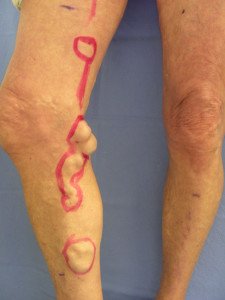
Varicose Vein
For "Varicose veins of the lower limbs" means an alteration morphological / functional of the superficial veins , that become elongated and dilated tortuous. Essentially reflect the price to pay to be passed , during the evolution of the species , the upright stance , generating an increase of pressure in the venous compartment of the lower limbs is not effectively compensated.
NOTES ANATOMY / PHYSIOLOGICAL
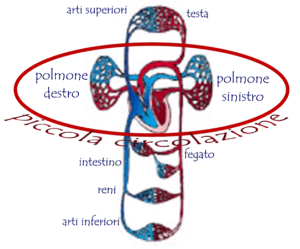
Pulmonary and systemic circulation
To better understand the mechanisms that generate venous disease is essential to acquire the bases anatomical / physiological on the movement of the limbs inferiori.Il circulatory system consists essentially of heart , deputy to pump the blood in arteries , which in turn convey it to the various districts of the organism , which later , through Russian does it again ritorno.Il heart is divided into atria and ventricles. The first are deputies to receive blood from the veins and push it towards the ventricles, which in turn the pump towards the pulmonary circulation , part destra e generale , part sinistra.La venous circulation of the lower limbs divides into superficial and deep depending reckoned respectively above or below the muscle fascia. The deep veins are , from the bottom of the tibial and peroneal that form the popliteal artery that continues in the superficial femoral artery that after receiving the deep femoral artery is called the common femoral artery. superficial veins are the large and the small saphenous. The first originates primarily to the medial malleolus and ends at the crural (just below the groin) in v. common femoral. The small saphenous vein originates posteriorly the lateral malleolus and ends at the level of the fold back of the knee in the vein poplitea.È intuitive that while the arteries exploit the momentum of blood to the heart to reach the various districts , veins do not benefit so markedly that push , in particular, the blood column in the lower limbs must fight also the strength of gravità.Ecco involved then ingenious mechanisms to facilitate the venous return to the heart.Le Valvole , such a swallow's nest for their particular conformation , are arranged in a variable number in the lumen of the veins and have the task of preventing the reflux of the blood from the top downwards.
A sinistra : Corretto Funzionamento ematico flusso delle diretto valvole with verse l'alto.
A destra : Incorrect operation of the valves with blood flow directed downwards.
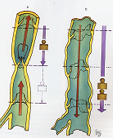
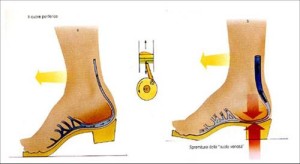
pump heel poplpaccio
The muscle pump heel - calf allows through the gait to propel the blood upwards to the combined action of squeezing of the sole and the plantar of the compression and decompression that muscles exert on the walls venose.I deep and superficial venous systems are in communication . These systems equipped with valves, allow the progression of the blood , normally, from the surface to profondità.Il venous blood flow , in normal conditions is directed from the surface to the depth. Similarly to what happens for the junctions saphenous / deep can become incontinent and reverse the direction of flusso.Un other more complex mechanism exploits the respirations and the depression that is formed to generate a suction effect of the blood column upwards. La , point at which the great saphenous vein joins with the common femoral , whose incontinence , for reasons we'll see later , generates the most common framework varici.Lo same mechanism can also affect the sapheno / popliteal artery with a picture of varicose veins blood differente.Il , as we have seen previously , in the lower limbs flowing from the bottom upwards , dalla safena (surface) towards the common femoral vein (deep). Under normal conditions, the 95% effluent blood from the lower limbs and conveyed into the deep system and the remaining 5% from the system superficiale.Quando the sapheno / femoral blood is incontinent , in the great saphenous vein is still , slowed. This condition in the long run overloaded venous walls resulting in the framework of varicose veins and exposed to the complications.
RISK FACTORS
Age: epidemiological studies have shown that the prevalence of varicose veins increases with age; there is' a peak incidence between the 50 e i 60 years with a decrease in older age.![]() Gender: and 'note the higher incidence in females than in males 3:1 about; the prevalence in females is linked to the influence of hormones on the wall of the vein and the number of pregnancies.
Gender: and 'note the higher incidence in females than in males 3:1 about; the prevalence in females is linked to the influence of hormones on the wall of the vein and the number of pregnancies.
Pregnancy: and 'possible that the development of varicose veins in pregnancy is related to changes in hormone levels , in particular estrogen, that stimulate the dilation of the veins along with muscle relaxation liscia.La pregnancy and 'also important factors for both of the mechanical type ( compression of the iliac veins by the uterus) both factors of hemodynamic (increased blood flow effluent from the small basin that obstructs the normal venous return of the lower limbs).
The overweight you may consider important in determining species skeletal changes in the foot , with the cancellation of the effect of squeezing plantar venous sole.
A positive family history and 'present from 10 all’80 % of varicose depending on the various statistics; and 'common opinion, however, that it is a game that influences a predisposition miopragia mesenchymal with the end result of a weakening of the vein wall subjected to stress pressor. Often inheritance occurs with agenesis of the femoral valves upstream of the crosse saphenous / femoral junction resulting in pressure overload.
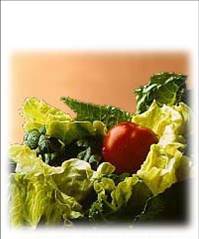 Diets low in protein and low in fiber lead from one side to alterations in the biosynthesis of glyco proteins of the vein wall and the other to a slowing of intestinal transit with increased intraocular pressure abdominal reflected on the axis and saphenous vein femoro-iliac.
Diets low in protein and low in fiber lead from one side to alterations in the biosynthesis of glyco proteins of the vein wall and the other to a slowing of intestinal transit with increased intraocular pressure abdominal reflected on the axis and saphenous vein femoro-iliac.
Among the occupational factors risk is universally accepted prolonged standing in addition to physical inactivity and microclimate.
HOW TO DIAGNOSE
WHEN YOU MAKE A VISIT
Given that it is recommended that a visit with vascular ecocolordoppler even in the absence of symptoms among 20/25 years , the most important signs to recognize that and 'need to seek specialist advice are:
Heavy legs
Swollen legs or ankles
Pruritus
Night cramps
Tension or pain
Presence of dilated veins or capillaries
Presence of skin spots
Thin skin or glossy
Ulcerations
Presence within the family of patients with venous disease
To give a symptom due importance is essential to rely on a specialist. The first step , therefore , in the presence of a positive family anamnesis ( even in the absence of symptoms but with components of the family suffering from venous disease) or once recognized the signs described above and 'a visit specialistica.Sarà specialist care indicate , eventually , exams most suitable to the completion of the diagnosis.
TESTING EQUIPMENT
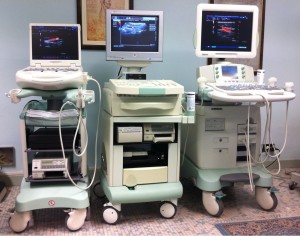
Ultrasound for the study of the venous system of the lower limbs
The examination today more valid to complete a diagnosis of venous disease and ' the Doppler ultrasound. Depending on the disease may also be required other exams. The aim will be to assess the venous circulation , distinguish primary from secondary varicose veins , assess the patency of the deep venous circulation , determine the proper functioning of the valves and the presence of any reflux patologici.Tutto this will lead us to formulate a correct diagnosis and as a result you will be able to establish a proper medical therapy is this , surgical , sclerosing or means fisici.Sfruttando ultrasound and doppler effect , the Doppler ultrasound allows non-invasive way to have a picture perfect dynamic of the veins of the gambe.Le equipment have evolved enormously in recent years and today there are devices that use sophisticated algorithms combined with the latest generation of probes that generate highly diagnostic images.
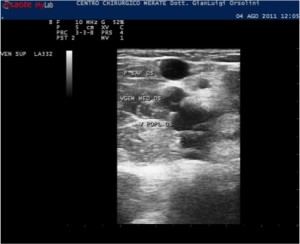
Ultrasound image which shows a small saphenous ectasic

Ultrasound image color which shows a saphenous reflux / popliteal
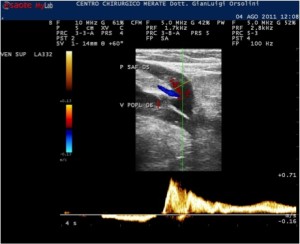
Doppler ultrasound image in which samples a reflux saphenous / popliteal and maneuvering compression decompression
WHEN AND WHY 'ACTION
COMPLICATIONS OF PATHOLOGY
Aesthetic problem to the , varicose veins of the lower limbs expose the patient at risk of serious complications , the impact of which is far from negligible.
Varicotromboflebite
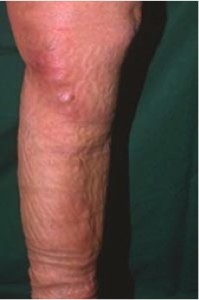
Varicotromboflebite thigh and leg
For Varicotromboflebite means inflammation with subsequent formation of a thrombus ( blood clot adhering to the wall ) within the vein wall. The varicose vein greatly increases the likelihood of Varicotromboflebite because of the blood collecting inside. Symptoms occur with redness , tumefaction , sorrow , heat and difficulties in normal ambulation.
Trombosi venous Profonda > ( Embolia Polmonare)
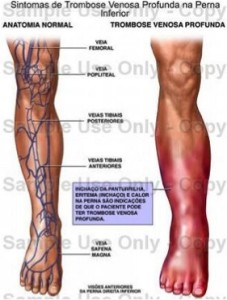
Deep vein thrombosis
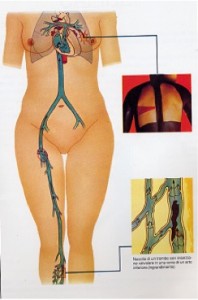
Pulmonary embolism from deep vein thrombosis of the lower limbs
For deep vein thrombosis is the formation of a thrombus within a vein deep (under fascial) that may cling to partially or totally the lume.Oltre that for the post-thrombotic syndrome , of which more later , there is the possibility that a thrombus ( blood clot adherent to the vascular lumen) can be transformed into embolus ( Free blood clot in the vascular lumen).A blood clot can be transported to the lungs giving the picture of pulmonary embolism , with the possible outcome fatale.La deep vein thrombosis can occur primitively or in consequence of the propagation in the deep venous thrombosis of a surface by means of a crosse or a piercing incontinente.La symptoms of deep vein thrombosis is more variable than the varicotromboflebite. Depending on the venous segment involved and the percentage of occlusion is manifested by pain associated or not with edema.Le varicose veins will then be PRIMITIVE if due to one of the causes mentioned above or if SECONDARY result of a previous deep vein thrombosis or Superficiale.La Syndrome , following a Deep Venous Thrombosis the venous system is insufficient compared to the demands of our organismo.Rappresenta a complex clinical picture in which it generates a loss, not only in the thrombosis but also to load the microcircolo.Il valvular damage modifies the condition (swelling) interessato.Il limb damage to the microcirculation and lymphatic capillaries consists of changes in the skin resulting in pain and possible formation of ulcers.
Ulcers
The ulcers previously viewed as an evolution of post-thrombotic syndrome , may be the direct consequence of a state varicose ulcer protratto.Si defines the loss of substance of the skin and subcutaneous tissue that does not tend to spontaneous recovery.
Lipodermosclerosi and Dermatiti
For Lipodermosclerosi is an area of hyperpigmented skin and hardened at the level of the leg, caused by the presence in the interstitial spaces of cellular material and proteins in vascular origin.
The stasis dermatitis are persistent inflammation of the skin of the lower limbs, associated with venous insufficiency , which is manifested by edema ,croste and squame ed è often itchy.
Hemorrhages and edema
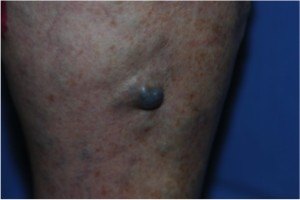
Varice at risk of haemorrhage
Bleeding are possible when a varicose vein due to the previously mentioned factors , is no longer effectively "protected" by the layer cute / sottocute.Pertanto , spontaneous or trauma may occur in real venous bleeding , since within the varicose vein stagnates a large amount of blood and that the ostium upstream is incontinent, thereby increasing the intraluminal pressure.
All possible complications presented make us realize how important it is istaurare a timely and appropriate therapy in cases of varicose veins inferiori.Il problem is that people in general are more likely to give weight to the problems of the present, not the possible occurrence , that is why it is sometimes hard to understand that prevention , even if implemented with surgery , now achievable in a mini-invasive , is the best way to avoid complications in irreparable.
TREATMENTS

TRADITIONAL AND MODERN
Once the varicose veins of the lower limbs were always drawn with the same technique , surgical , which provided for the ligation associated with stripping of the saphenous vein until malleolo.Ad today with the advent and refinement of the survey ecocolordoppler are unable to map in detail the limb and to identify the exact causes of the disease. We will not have more then one treatment but different modes of action conditioned by cause and by the different frameworks patologici.E 'obvious that in the last few decades, technology has made great strides , balance remains the principle that the human reasoning will be the first factor for the success of the treatment , is this drug - by physical or chirurgico.La most of varicose veins arising from a valvular insufficiency ostial therefore still the "surgery" , with the necessary improvements that will be analyzed later , the method is more effective and long lasting.
For the treatment of varicose veins , omitting the methods now universally considered bankruptcy , too risky or those who do not have a reason for being scientific but only propaganda , We can now make use of:
– Therapy Natural / Homeopathic
– Medical Therapy Pharmacologic
– Treatment by physical means (Elastic Restraint / bandages)
– Sclerosing therapy
– Surgical Therapy (Telescopic endovascular retraction - Stripping - CHIVA. – Laser endovasale - radiofrequenza)
NATURAL TREATMENT AND HOMEOPATHIC
It is well known since ancient times the effectiveness of certain herbs on venous disease. Obviously, these remedies can not cancel the risk of varicotromboflebite , but may find it rational use in the early stages of the disease , even when the reflux is not blown , or in the postoperative , or still in preparation to treatments sclerosanti.L 'horse chestnut , the blueberry , butcher's broom are just some of the components that individually or in combination may exert a beneficial effect on the veins of the limbs inferiori.Ovviamente indication must always be specialized , remember that it is wrong to assume compositions although natural , without consulting your doctor.
THERAPY FAMACOLOGICA
There are also many medications available for the venous system. Leaving aside those whose action can be superimposed on natural compounds , remember that heparins are still the first choice for the initial phase of treatment of deep venous thrombosis , complications of varicose veins inferiori.Anche here over the years has passed from the old to the modern low molecular weight heparins until you get to synthetic compounds , il Fondaparinux , that would have some advantage over those extraction animale.L 'use of warfarin sodium , Coumadin , once universally recognized as the treatment of choice for deep venous thrombosis is now some specialists contestazioni.Alcuni Americans prefer to deal with low molecular weight heparin than with warfarin for deep venous thrombosis risk of not maintaining an adequate and INR . And’ currently perfecting the possible use of heparin in tablets.
PHYSICAL THERAPY WITH MEANS
The use of elastic compression is a hotly debated topic in which there are opinions entirely discordanti.Dandone for granted the usefulness for the prevention of post-thrombotic syndrome are appropriate concomitant use some clarification to varicose veins is this inferiori.Un garrison doctor or , always prescribed by a specialist , both as regards the type ( knee , monocollant , sticky ...) both for the degree of compression find their apex of necessity in the warm months. Unfortunately in this period are poorly tolerated by the patient who instead prefers in the winter months when their use is less indispensabile.Attenzione that a stocking wrong can damage the circulation to promote the istaurarsi a varicotromboflebite.È universally recognized the usefulness of the sock . There are various models and compressions and must be prescribed by a specialist.
Sclerotherapy
The sclerosing are a method known since ancient times which consist of injecting a substance "irritating" the vessel wall with the aim of obliterali. Many associate them only to telangiectasia , the capillaries beauty that all women hate. Instead, they are used for a finissage surgery for esthetic results more validi.L 'evolution has allowed us to have completely non-toxic liquid in various concentrations ,with the possibility of obtaining foams to be injected with needles whose dimensions allow the bites practically indolore.Per the record, other methods were complemented by the classic sclerosing whose prescriptions cover a small percentage of cases treatable. Among these, the laser , pulsed light and injections of ozono.Tralasciamo choice for other methods , although much publicized , because they do not use drugs authorized , are not currently supported by comparative studies and do not have a scientific rationale.
To date , when the study with Doppler ultrasound of the venous circulation it deems appropriate , Some varicose veins can be treated with ultrasound-guided scleroperapia. The method involves injecting a gel in the vein sclerotherapy under ultrasound guidance for the obliteration of the vessel.
SURGICAL THERAPY
Surgical therapy is the only method to date that is capable of "protecting" the risk of thrombosis and its complications. We will briefly describe the various techniques that have taken place in recent years and compared the real benefits of the intervention with the traditional method, in our view the most recent and most efficace.Gli feasible interventions on the veins of the lower limbs are multiple. Leaving aside those with cosmetic purpose we compare the methods that aim to treat reflux of the saphenous junction , and then to abolish the risk of phlebitis / trombosi.Le methods currently available are: Ligation and endovascular telescopic retraction of the saphenous vein – High ligation and stripping of the saphenous vein - E.V.L.T. - Radio Frequency - C.H.I.V.A. .
E.V.L.T : is a method characterized by the use of a fiber laser that inserted into the saphenous vein and brought to around 2,5 cm from its junction with the deep circulation fotocoarta obliterating the vein technique malata.La , ideally valid , is difficult to use due to the extreme sensitivity of the variables involved ( might , thickness of the vein wall , distance from skin , presence of incompetent perforating ...) and burdened with complications intra and post operatorie.Oltre to this there is a high recurrence rate. The same reasoning can be applied to the technique that uses radio frequency.
C.H.I.V.A.: mean ambulatory hemodynamic correction of venous insufficiency. E 'a method that aims to restore the result of a normal hemodynamic flow suppressing selectively points reflusso.Anche this method , ideally good , is practically burdened by a high rate of recidive.Questo because we must remember that the varicose veins of the lower limbs are part of a general condition , which will then , in most cases , to do ammalale subsequently segments healthy at the time of the intervention.
The two techniques are comparable then the ligation with stripping of the great saphenous ( traditional method) and ligation with endovascular retraction of the great saphenous ( modern method).Let us always remember that the goal is to avoid complications that varicose disease could innescare.Al outside of special cases, with the intervention aims to prevent a possible complication futura.È therefore assume that the first characteristic of the intervention must be .
Anesthesia:
The traditional surgery is performed under general anesthesia or ( where "sleeping") o epidurale (puncture in the back) resulting in anesthesia sensory / motor or the lower limbs ( you lose sensitivity and limbs are paralyzed for a few hours).The modern intervention can be performed under local anesthesia , the same that is practiced by the dentist , in the indicative quantity with which are carried 2/3 fillings. You lose only the sensitivity ( it is able to move his leg always) , to be made only in the territory , only the time of surgery.
TIMES:
The traditional surgery requires a hospital clinical / hospital, and includes at least 2/3 gg. of stay in the facility sanitaria.L 'modern intervention engages in everything 3 hours averagely divided into 30 min for preoperative Doppler ultrasound - 30 minutes for obtaining anesthesia ( 10 minutes to execute and 20 minute wait) – 30 minutes of action - 1 now in hospital - 30 minutes between preoperative preparation / discharge. (anamnesis is performed on the occasion of the first visit)
SURGICAL TECHNIQUE:
The traditional involves the stripping which consists in tearing the vein that is loaded on a crescent and then removed with consequent trauma of the surrounding tissues which justifies the considerable hematomas post / operatori.La modern technique consists in telescopic retraction endovascular with which the vein is removed from .
STROKE RECOVERY :
The traditional need for intervention at least 10 gg. of elastic bandages before removal of stitches - you will be able to walk again normally after 7/10 gg. - You may return to normal work activities, sports etc. ... after 30 gg.L 'modern intervention need to 4/6 gg. of elastic stocking light before the removal of the sutures inrtradermiche ( cosmetics that do not require the traditional sutures) - It starts walking immediately after surgery - you may return to normal activities after 3 gg. , after heavy 7 gg.
Finally , seen that the disease primarily affects women , and you're talking about legs , we can not consider the side estetico.L 'traditional intervention left many scars and large , both because of suture technique that the type of operazione.L 'modern intervention , thanks to a rigorous pre-operative ultrasound-guided mapping allows very few incisions , targeted , millimeter , that do not require sutures traditional (only by intradermal).
Though it is not the aim of the intervention , Modern technology offers the best results from the point of view of aesthetics.
TIPS
The real advice is to go to a specialist when needed , without waiting or rimandare.Elencheremo however some lifestyle habits that are good for healthy legs , but do not preserve the most complications , in particular from thrombosis.
Avoid prolonged orthostatic (standing still for prolonged periods) and long remain seated.
Avoid clothing that form constraints on the legs and thighs.
Do not wear heels neither too high nor too bassil'ideale is three / four centimeters.
Sleeping with legs raised 10-15 inches higher than the heart and when possible, do the same in moments of rest of the day.
Avoid direct and prolonged exposure to heat sources. You could expose yourself to the sun , in the cooler hours , what is the harm the sun does not heat! Better to take the sun in the wet times in keeping , rather than staying under an umbrella with towel on her legs!!!! The heat has a vasodilatory effect, is preferable to a shower to a bath in the tub so it is best to avoid even the saunas.
The power supply is not determinative of venous insufficiency, However, it is important to avoid constipation , excess weight , Diets low in protein and low in fiber.
Exercise is advisable; driving, the swimming and running at a slow pace compared to tennis and bodybuilding: the important thing is the symmetry of the movement associated with a rhythmic contraction and relaxation of muscle.
Avoid excessive trauma or bruises on the legs massages too violent ,damaging the vein wall ,can cause phlebitis!!!
The hygiene of the skin especially in the lower limbs and feet.
During long car trips, stop every two hours and perform a short walk; on long trips by train or by plane , lie down or walk frequently.
Walking in the sea , preferably with legs immersed up to the thigh.
In the case of treating cellulite try to improve the circulatory component with lymphatic drainage.
The support of the foot must be optimal because it guarantees perfect function of the venous pump; you need to try to correct the asymmetry with an orthotic or gymnastics.
I travel by air must be avoided in the presence of varicose veins of the lower limbs. In recent years there has been a high incidence of venous thrombosis after air travel. The phenomenon has acquired frequently enough to coin the term of Low Class Syndrome , which will indicate a thrombosis resulting in a biased position of the legs during air travel.
The birth control pill , widespread , especially among adolescents , absolutely must not be taken if you smoke. The modern knowledge impose on those who want to take birth previously to undergo blood tests to specific coagulation.
All information required are used to avoid exposing themselves to the risk of thrombosis , that increases in the presence of varicose veins.
CONCLUSIONS
In conclusion we can say that the varicose veins of the lower limbs exposed to multiple complications , some serious.
And 'advisable to undergo a specialist if symptoms such as heavy legs can be recognized , Swollen legs or ankles , Pruritus, Night cramps, Tension or pain, Presence of dilated veins or capillaries, Presence of skin spots, Thin skin or glossy, Ulcerations. In the absence of symptoms to undergo a specialist if there is always the presence within the family of patients with venous disease.
Complications of venous disease are : Varicotromboflebite , Trombosi venous Profonda ( Embolia Polmonare) , Ulcers , Lipodermosclerosi , Dermatitis , Bleeding, Edema.
The most important complication is the superficial vein thrombosis / deep.
The diagnosis is made by a specialist and always must be completed with a Doppler ultrasound.
A decision on the best mode of intervention that will be with Natural Supplements / Homeopathic , Drug , by physical means , sclerotherapy or surgical.
In case of intervention to date there is a modern technique ( ligation with telescopic retraction associated with endovascular selective ablation of any flebectasie with microsurgical technique) that allows the resolution of the complications associated with excellent aesthetic results. It is performed under local anesthesia (quella the dentist) , does not require hospitalization ( committed only 3 hours of which 30 my. intervention) and allows immediate ambulation and resumption of normal activities in a few days.


